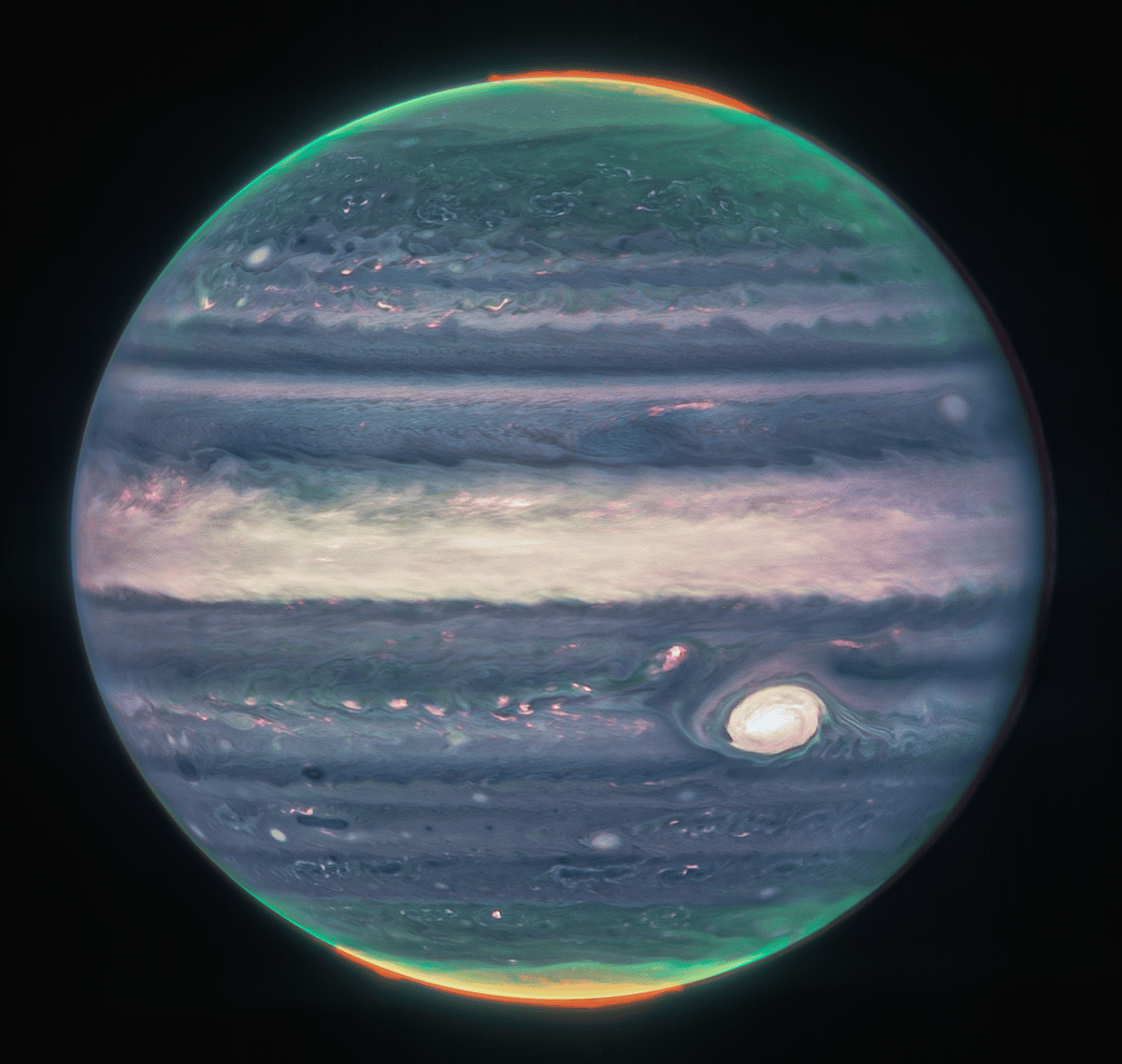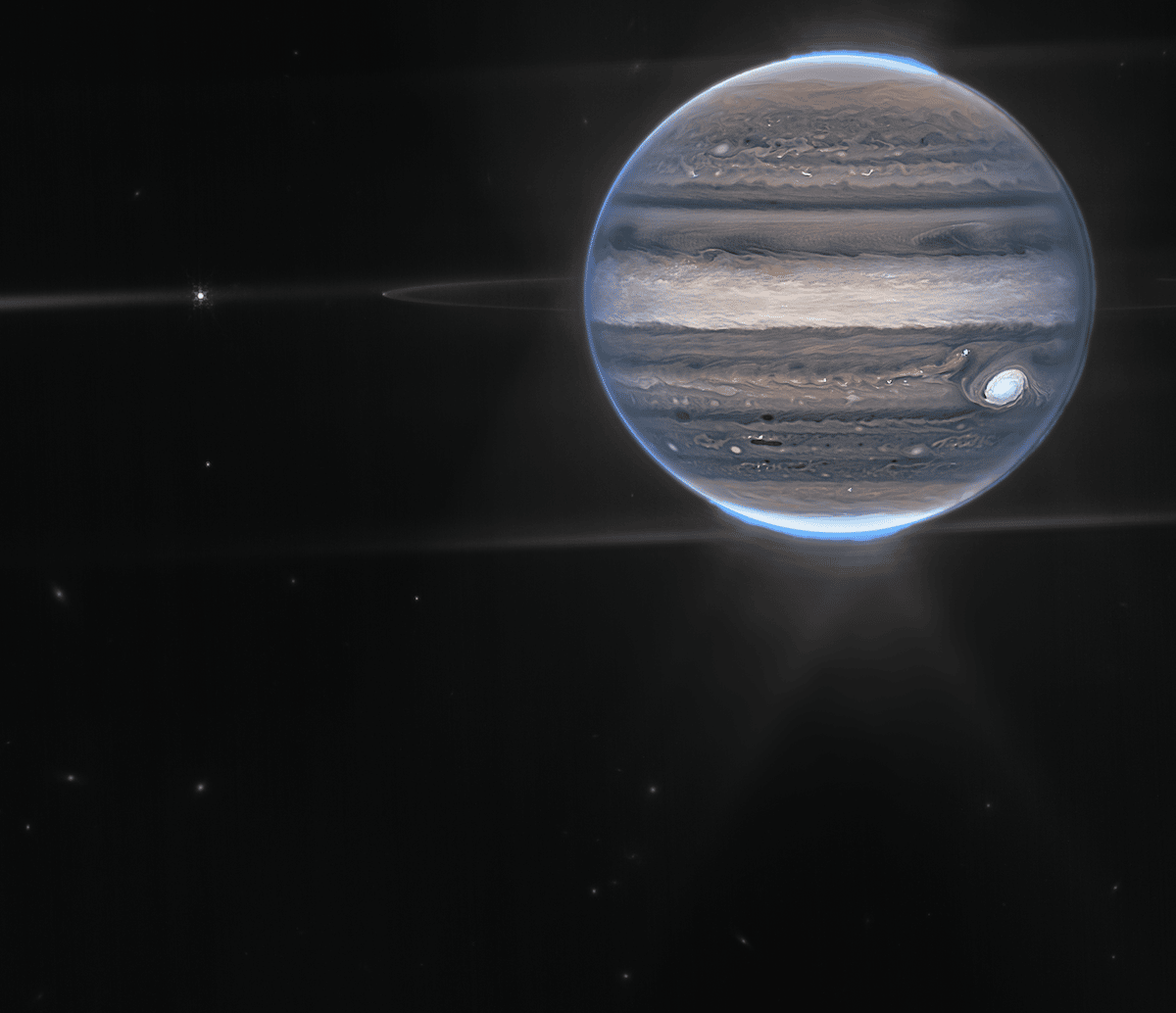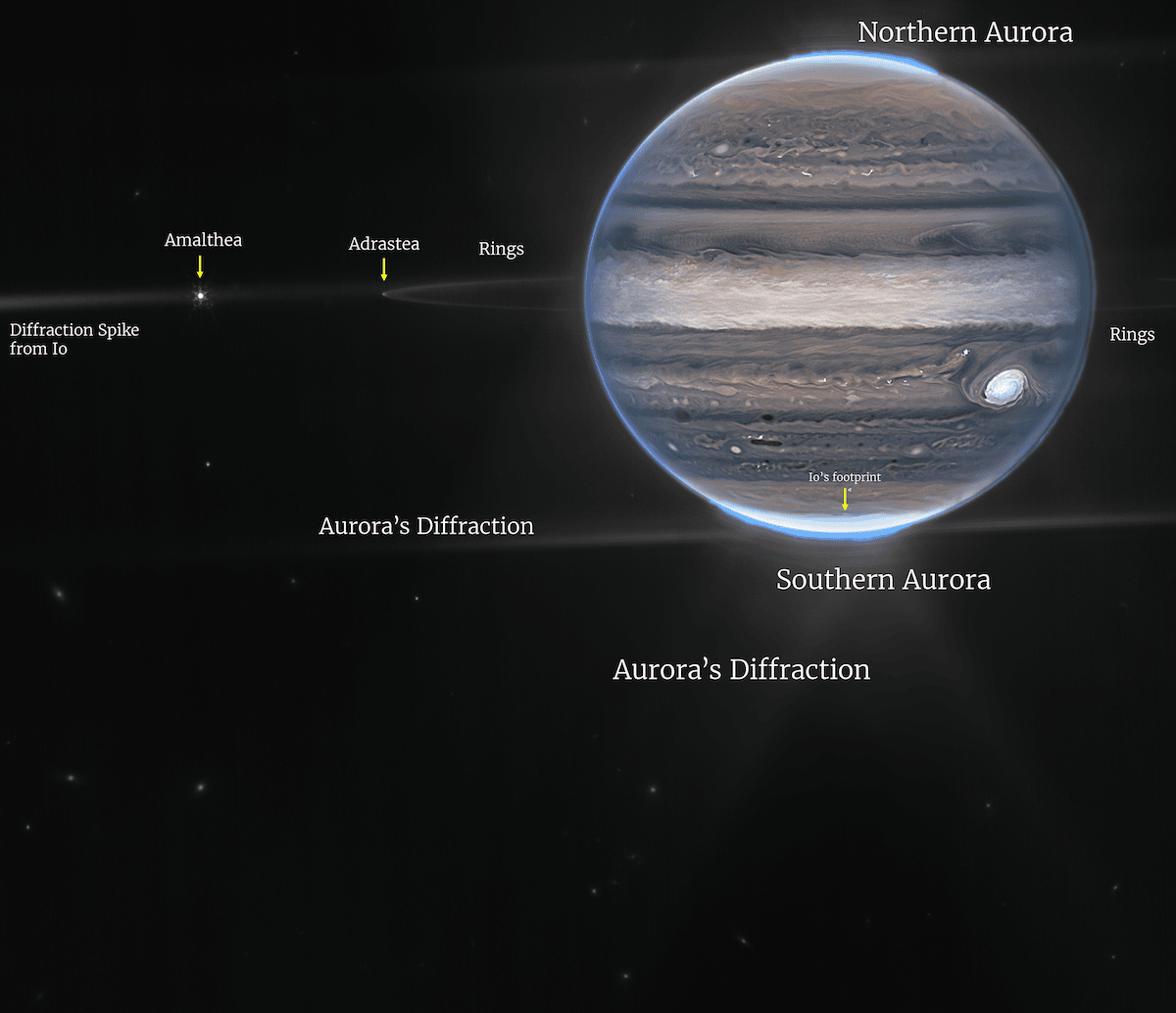Photo: NASA, ESA, CSA, Jupiter ERS Team; image processing by Judy Schmidt.
The James Webb Space Telescope gave us aglimpse of Jupiterin a photo taken during its commissioning phase.
But that image pales in comparison to the fully-processed JWST Jupiter photos that have just been released.

Photo: NASA, ESA, CSA, Jupiter ERS Team; image processing by Judy Schmidt.
Everything was made possible thanks to NIRCam’s three filters, which map different wavelengths of infrared light.
Once the raw data was collected, citizen scientist Judy Schmidt transformed it into the images we see today.
This isn’t her first go-around with JWST image processing.

Photo: NASA, ESA, CSA, Jupiter ERS Team; image processing by Ricardo Hueso (UPV/EHU) and Judy Schmidt.
Recently, she published several spectacular images ofspiral galaxiestaken by the telescope.
As for the Jupiter photographs, there are key landmarks that are clearly visibleincluding the Great Red Spot.
In these images, it appears white, but for good reason.

Photo: NASA, ESA, CSA, Jupiter ERS Team; image processing by Ricardo Hueso (UPV/EHU) and Judy Schmidt.
In the more pulled-back view of the planet, JWST was able to pick up Jupiter’s rings.
This is an impressive feat when one considers that the rings are a million times fainter than the planet.
Two of Jupiter’s moons, Amalthea and Adrastea, also make an appearance.
Researchers are continuing to analyze the Jupiter data that Webb provided.
In doing so, they are sure to learn even more about the Gas Giant.